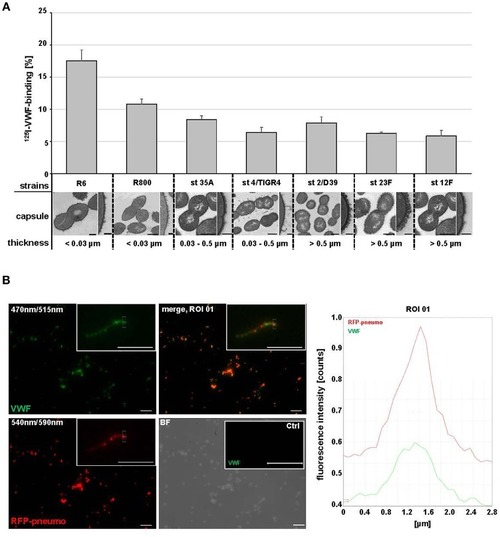- Title
-
Von Willebrand Factor Mediates Pneumococcal Aggregation and Adhesion in Blood Flow
- Authors
- Jagau, H., Behrens, I.K., Lahme, K., Lorz, G., Köster, R.W., Schneppenheim, R., Obser, T., Brehm, M.A., König, G., Kohler, T.P., Rohde, M., Frank, R., Tegge, W., Fulde, M., Hammerschmidt, S., Steinert, M., Bergmann, S.
- Source
- Full text @ Front Microbiol
|
|
|
Pneumococci bind to VWF strings generated in continuous flow. |
|
Colocalization of pneumococci with VWF in vascular system of |



